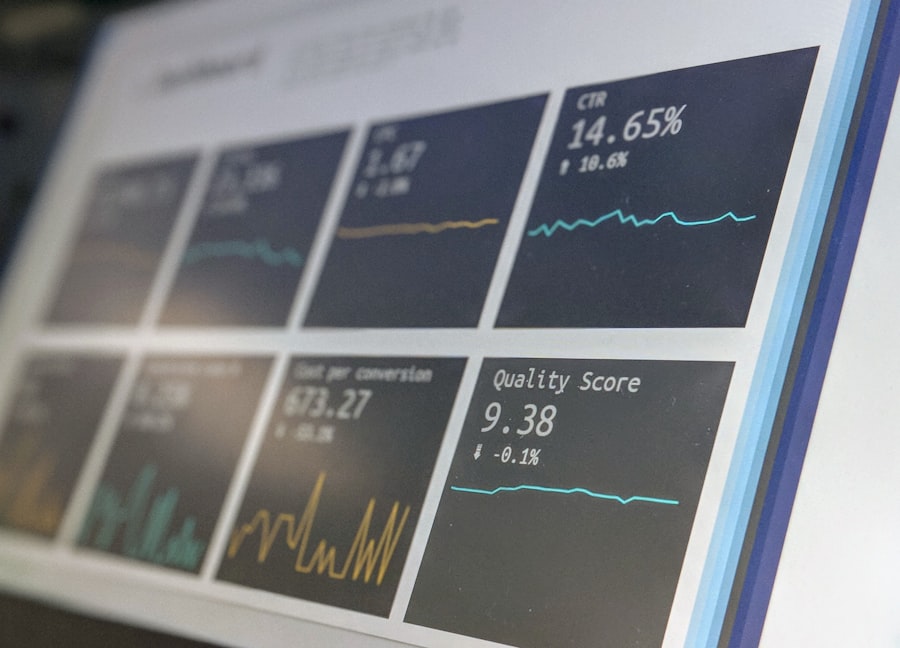
YouTube Analytics is a powerful tool that provides creators with a wealth of information about their channel’s performance and audience behavior. By delving into this data, content creators can gain insights that are crucial for refining their strategies and enhancing viewer engagement. The platform offers a comprehensive dashboard that displays various metrics, including views, watch time, subscriber growth, and engagement rates.
Understanding these metrics is essential for any creator looking to optimize their content and reach a broader audience. The analytics dashboard is divided into several sections, each focusing on different aspects of channel performance. For instance, the Overview section provides a snapshot of key metrics over a specified period, allowing creators to quickly assess how their videos are performing.
The Reach section offers insights into how viewers are discovering content, while the Engagement section dives deeper into how viewers interact with videos. By familiarizing themselves with these sections, creators can identify trends and patterns that inform their content strategy, ultimately leading to more effective video production and marketing efforts.
Key Takeaways
- YouTube Analytics provides valuable insights into the performance of your channel and videos.
- Key metrics for engagement include likes, comments, shares, and subscriber growth.
- Audience retention data helps you understand at what point viewers are dropping off in your videos.
- Traffic sources insights show where your viewers are coming from, such as search, suggested videos, or external websites.
- Watch time and click-through rates are important indicators of how engaging your content is to viewers.
Identifying Key Metrics for Engagement
When it comes to measuring engagement on YouTube, several key metrics stand out as particularly important. One of the most significant is the engagement rate, which encompasses likes, comments, shares, and subscriptions gained from a video. This metric provides a clear indication of how well a video resonates with its audience.
A high engagement rate suggests that viewers find the content valuable and are motivated to interact with it, while a low rate may indicate that the content is not meeting audience expectations. Another critical metric is the average view duration, which reflects how long viewers are watching a video before clicking away. This metric is particularly telling; if viewers drop off early in the video, it may suggest that the content is not engaging enough or that the pacing is off.
Creators should aim for a high average view duration, as it not only indicates viewer interest but also positively impacts YouTube’s algorithm, potentially leading to increased visibility in search results and recommendations.
Utilizing Audience Retention Data

Audience retention data is one of the most valuable insights available in YouTube Analytics. This metric shows how well a video keeps viewers engaged throughout its duration. By analyzing audience retention graphs, creators can pinpoint specific moments where viewers tend to drop off or lose interest.
This information is crucial for understanding what works and what doesn’t in terms of content delivery and pacing. For example, if a creator notices a significant drop in retention at a particular point in their video, they can investigate what might have caused this disengagement. It could be due to a lengthy introduction, an uninteresting segment, or even a lack of visual engagement.
Armed with this knowledge, creators can adjust their future videos to maintain viewer interest more effectively. Techniques such as incorporating hooks at the beginning of videos or varying the presentation style can help improve retention rates and keep audiences watching until the end.
Leveraging Traffic Sources Insights
| Traffic Source | Visitors | Conversion Rate | Revenue |
|---|---|---|---|
| Organic Search | 5000 | 3% | 10000 |
| Direct Traffic | 3000 | 2.5% | 7500 |
| Referral Traffic | 2000 | 4% | 6000 |
Understanding where viewers are coming from is essential for optimizing content strategy on YouTube. The Traffic Sources report within YouTube Analytics provides insights into how viewers discover videos, whether through search results, suggested videos, external websites, or social media platforms. By analyzing this data, creators can tailor their promotional efforts to focus on the most effective channels.
For instance, if a significant portion of traffic comes from search results, it may be beneficial to invest time in optimizing video titles, descriptions, and tags for SEO. Conversely, if suggested videos are driving traffic, creators might want to analyze which videos are being recommended alongside theirs and consider creating similar content or collaborating with those creators. Understanding traffic sources not only helps in refining content but also aids in strategic marketing efforts that can enhance visibility and reach.
Analyzing Watch Time and Click-Through Rates
Watch time is another critical metric that reflects the total minutes viewers spend watching a channel’s videos. This metric is vital because YouTube prioritizes watch time in its algorithm; channels with higher watch times are more likely to be promoted in search results and recommendations. Creators should strive to increase their overall watch time by producing engaging content that encourages viewers to watch multiple videos in one session.
Click-through rate (CTR) is equally important as it measures the percentage of viewers who click on a video after seeing its thumbnail and title. A high CTR indicates that the thumbnail and title are compelling enough to attract clicks, while a low CTR may suggest that they need improvement. Creators can experiment with different thumbnail designs and titles to see what resonates best with their audience.
For example, using bold colors or intriguing text in thumbnails can capture attention more effectively than generic images or titles.
Optimizing Content for Viewer Interaction

To foster greater viewer interaction, creators must focus on optimizing their content for engagement. This can be achieved through various strategies such as asking questions within videos, encouraging comments, or prompting viewers to share their thoughts on specific topics. By actively inviting viewer participation, creators can create a sense of community around their channel, which can lead to increased loyalty and repeat viewership.
Incorporating interactive elements such as polls or quizzes can also enhance viewer engagement. YouTube allows creators to add cards and end screens that link to other videos or encourage subscriptions. Utilizing these features effectively can guide viewers toward additional content they may enjoy, thereby increasing overall watch time and interaction rates.
Additionally, responding to comments and engaging with viewers in the comment section can further strengthen the connection between creators and their audience.
Using Demographics and Geographic Data
Demographic data provides valuable insights into who is watching a creator’s videos. Information such as age, gender, and location can help tailor content to better suit the target audience’s preferences. For instance, if analytics reveal that a significant portion of viewers are young adults aged 18-24, creators might consider producing content that aligns with trends popular among that demographic.
Geographic data is equally important as it reveals where viewers are located around the world. This information can inform decisions about language use in videos or even the timing of uploads based on when specific audiences are most active online. For example, if a creator has a substantial following in Europe but primarily uploads during U.
peak hours, they might miss out on potential views from their European audience. By understanding these demographics and geographic trends, creators can make informed decisions that enhance their reach and engagement.
Implementing Strategies to Increase Engagement
To effectively increase engagement on YouTube, creators should implement a multi-faceted approach that combines various strategies tailored to their audience’s preferences. One effective method is to create series-based content that encourages viewers to return for subsequent episodes or installments. This not only builds anticipation but also fosters a sense of community among viewers who are eager to discuss each new release.
Another strategy involves collaborating with other creators within similar niches or genres. Collaborations can introduce new audiences to a creator’s channel while providing fresh content ideas that resonate with both sets of followers. Additionally, hosting live streams or Q&A sessions can create real-time interaction opportunities with viewers, allowing them to engage directly with the creator and each other.
Incorporating storytelling techniques into videos can also enhance viewer engagement by creating emotional connections with the audience. Whether through personal anecdotes or relatable narratives, storytelling can captivate viewers’ attention and encourage them to share their own experiences in the comments section. By continuously experimenting with different formats and strategies while closely monitoring analytics data, creators can refine their approach over time and cultivate a loyal viewer base eager for more content.
If you are interested in learning more about YouTube analytics, you may want to check out the article on sersea.media.
Whether you are a content creator, marketer, or business owner, understanding YouTube analytics is essential for achieving your goals on the platform.
FAQs
What is YouTube analytics?
YouTube analytics is a tool provided by YouTube that allows content creators to track and analyze the performance of their videos and channels. It provides data on metrics such as views, watch time, audience demographics, and engagement.
How can I access YouTube analytics?
To access YouTube analytics, you need to have a YouTube channel and be logged into your account. Once logged in, you can access the analytics by clicking on your profile picture in the top right corner, selecting “YouTube Studio,” and then navigating to the “Analytics” tab.
What kind of data does YouTube analytics provide?
YouTube analytics provides a wide range of data, including information on views, watch time, traffic sources, audience demographics, engagement (likes, comments, shares), revenue from ads, and more. This data can help content creators understand their audience and improve their content strategy.
How can YouTube analytics help content creators?
YouTube analytics can help content creators understand their audience, identify trends, and make data-driven decisions to improve their content strategy. It can also help creators track the performance of their videos and channels over time, and optimize their content for better results.
Are there any limitations to YouTube analytics?
While YouTube analytics provides valuable data, it does have some limitations. For example, it may not provide data on individual viewer behavior or specific external factors that may impact video performance. Additionally, some features of YouTube analytics may be restricted to channels with a certain number of subscribers or watch hours.


